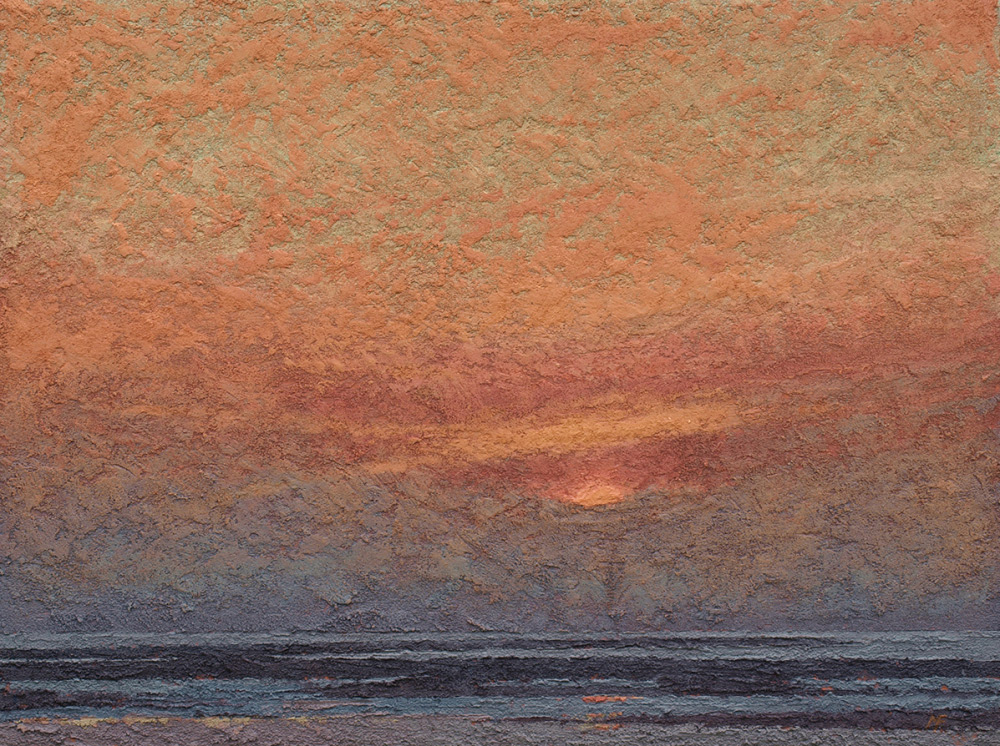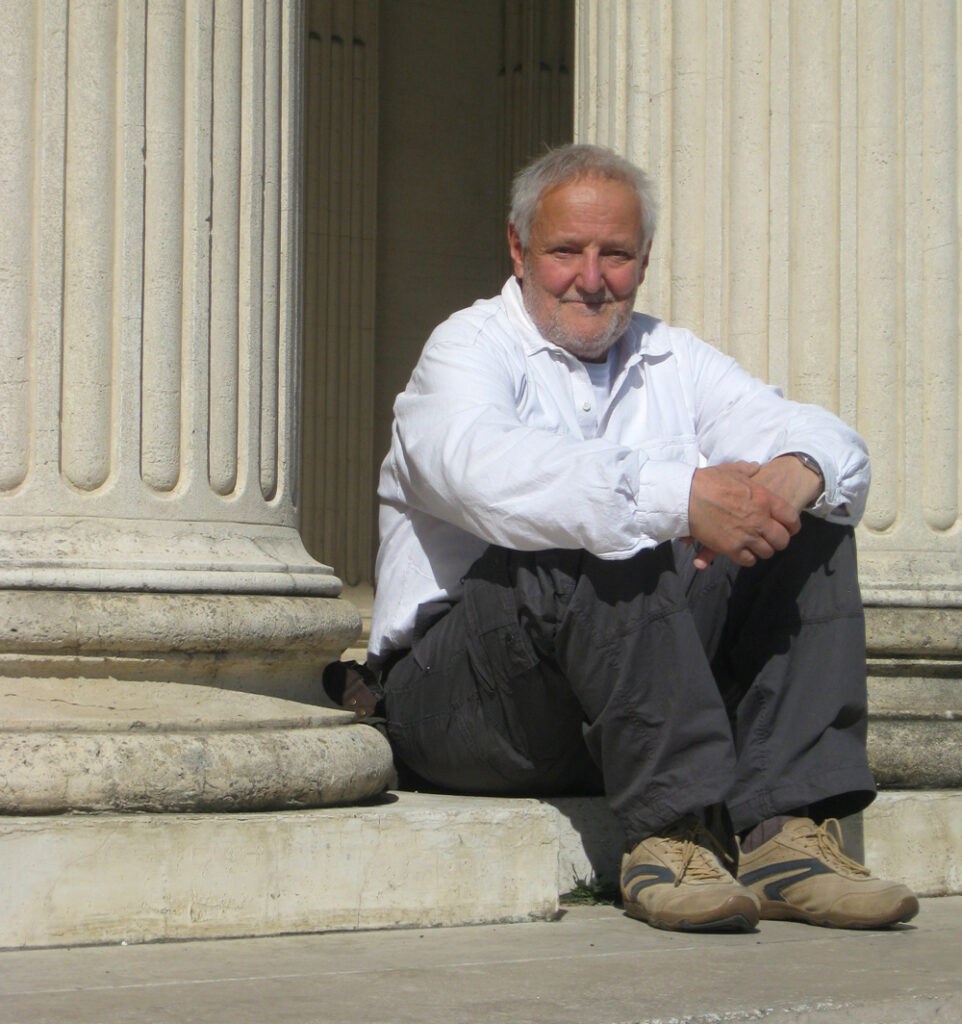
Michael Fairclough explores the immensity of sun, sky and sea in richly coloured, multi-layered and deeply textured impasto paintings. His recent works contemplate the transition from light to darkness. Sunset, dusk and twilight are a succession of light effects which can easily look overblown in paintings but Michael Fairclough’s compositions encompass the subtle shifting interplay of light and cloud to capture the wonder of nature.
Michael Fairclough’s most recent paintings are available to view below and buy via email or phone +44 (0)1308 459511.
Michael Fairclough has shown his richly textured light-filled sky paintings at Sladers Yard for a couple of years. Now we are delighted to exhibit a selection of the beautiful aquatint prints which he printed on his own press over many years. Gently coloured, superbly controlled works showing the British coastline, standing stones and the ever-changing sky, these pictures are the product of a truly talented printmaker.
In a great Romantic tradition that goes back to Turner and Constable, painting the sky has been a fascination for English landscape painters, who see it as a source of energy and a means to convey mood and consciousness. Michael Fairclough’s sky paintings are so well observed that his largest commission to date has been five large canvases for the Meteorogical Office.

To me painting is about glimmering reflections of sea and wet rock or colossal shafts of light through clouds – and always, always changing texture, structure, rhythm and light. The texture and structure are in the paintings. The rhythms are those of the wind and the waves, of bird wings and calls, drawn out and slow or sharp and frenetic like the music of Donegal. The light is all-pervading.
MICHAEL FAIRCLOUGH

Michael has always been a landscape artist, making tiny oil studies of the Taw-Torridge estuary while studying painting at Kingston and developing this practice in explorations of Donegal and the west coast of Ireland. He met Alfred Stockham when they were both Rome scholars. Summers spent on beaches in Greece and southern Italy produced work with an underlying structural element resulting in paintings and aquatints with a strong formal character, culminating in his concrete relief mural for the Farnham Post Office in 1981. In the same year the commission to design five stamps for the 50th Anniversary of the National Trust for Scotland took him to St. Kilda and back to Northern Ireland.
Editions of his aquatints were published by Christie’s Contemporary Art 1978-88 and he contributed a number of aquatints to their National Trust series of prints. He moved away from prints in the 1990s to concentrate on painting. He returned to Donegal in 1998 and two exhibitions at the Berkeley Square Gallery followed. His commission for the Meteorological Office boardroom in Exeter led to his taking up gliding, the better to understand the sky which had become so predominant in his work. His aquatints and paintings have been exhibited all over the UK and internationally. His work is in many private and public collections.

On the curved wall of the boardroom the evening sun is immediately flanked by two afternoon images and at the outer edges by a pair of mornings. Scanning from left to right we see the gathering and dispersal of clouds around the whorl of the sun, a shift from violet to turquoise, and a fold in time – morning, afternoon, evening, afternoon, morning. The central view includes a pair of sun-dogs, images of the sun created by sunlight refracting through ice crystals in a haze of cloud. They occur when the sun is low in the sky and at the edges of a luminous halo. These mock suns hang, as rainbows do, nowhere. They are the effect of a point of view. The phenomenon and the painting resemble old cosmological drawings, as if the sky has sketched upon itself great orbits, tangents and notations. From the symbolic vantage point of the Isle of Man, roughly at the centre of the geographical-meteorological territory known as the British Isles, Fairclough’s painting does what the eye cannot and lets us stare straight into the sun.
SHIRLEY MACWILLIAM ART AT THE MET OFFICE
Sladers Yard
West Bay Road
West Bay, Bridport
Dorset DT6 4EL
gallery@sladersyard.co.uk
Tel. 01308 459511
© Sladers Yard 2024
Café Sladers
Licensed Restaurant
Events
Information
Weddings and Parties
café@sladersyard.co.uk
Site by FER
Sladers Yard
West Bay Road
West Bay, Bridport
Dorset DT6 4EL
gallery@sladersyard.co.uk
Tel. 01308 459511
Café Sladers
Licensed Restaurant
Events
Information
Weddings and Parties
café@sladersyard.co.uk
© Sladers Yard 2024. Site by FER.